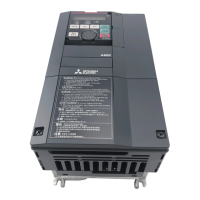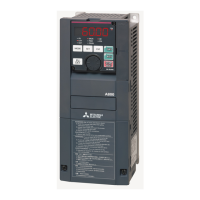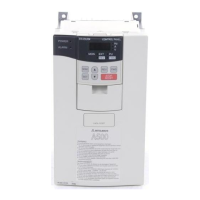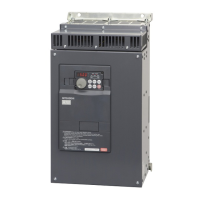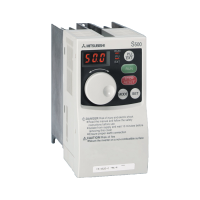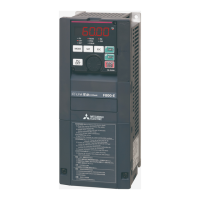Measurement of main circuit voltages, currents, and powers
124
PRECAUTIONS FOR MAINTENANCE AND INSPECTION
Measuring points and instruments
Use an FFT to measure the output voltage accurately. A tester or general measuring instrument cannot measure accurately.
When the carrier frequency exceeds 5 kHz, do not use this instrument since using it may increase eddy current losses produced in metal parts
inside the instrument, leading to burnout. In this case, use an approximate-effective value type.
When the setting of Pr.195 ABC1 terminal function selection is the positive logic
Item Measuring point Measuring instrument Remarks (reference measured value)
Power supply voltage
V
1
Across R/L1 and S/L2,
S/L2 and T/L3,
T/L3 and R/L1
Digital power meter (for inverter)
Commercial power supply
Within permissible AC voltage fluctuation
(Refer to page 128.)
Power supply side
current
I
1
R/L1, S/L2, T/L3 line
current
Power supply side
power
P
1
R/L1, S/L2, T/L3 and
Across R/L1 and S/L2,
S/L2 and T/L3,
T/L3 and R/L1
P
1 = W11 + W12 + W13 (3-wattmeter method)
Power supply side
power factor
Pf
1
Calculate after measuring power supply voltage, power supply side current and power supply side power.
Output side voltage
V
2
Across U and V, V and
W, and W and U
Digital power meter (for inverter)
Difference between the phases is within 1% of the
maximum output voltage.
Output side current
I
2
U, V and W line
currents
Difference between the phases is 10% or lower of
the inverter rated current.
Output side power
P
2
U, V, W and
across U and V, V and
W
Digital power meter (for inverter)
P
2 = W21 + W22
2-wattmeter method (or 3-wattmeter method)
Output side power
factor
Pf
2
Calculate in similar manner to power supply side power factor.
Converter output Across P/+ and N/- Digital multimeter or other tester Inverter LED is lit. 1.35 V
1
Frequency setting
signal
Across 2, 4(+) and 5
Digital multimeter or other tester, or
moving-coil type instrument
(internal resistance 50 kΩ or more)
0 to 10 VDC, 4 to 20 mA
"5" is .
common
Across 1(+) and 5
0 to ±5 VDC and 0 to ±10 VDC
Frequency setting
power supply
Across 10(+) and 5 5.2 VDC
Across 10E(+) and 5 10 VDC
Frequency meter
signal
Across AM(+) and 5
Approximately 10 VDC at maximum
frequency
(without frequency meter)
Across CA(+) and 5
Approximately 20 mADC at maximum
frequency
Across FM(+) and SD
Approximately 5 VDC at maximum
frequency
(without frequency meter)
Pulse width T1: Adjust with C0 (Pr.900).
Pulse cycle T2: Set with Pr.55.
(frequency monitor only)
"SD" is
common
Start signal
Select signal
Reset signal
Output stop signal
Across STF, STR, RH,
RM, RL, JOG, RT, AU,
STOP, CS, RES,
MRS(+) and SD (for
sink logic)
When open
20 to 30 VDC
ON voltage: 1 V or less
Fault signal
Across A1 and C1
Across B1 and C1
Digital multimeter or other tester
Continuity check
[Normal] [Fault]
Across A1 and C1 Discontinuity Continuity
Across B1 and C1 Continuity Discontinuity
Pf1
P1
3V1 I 1
------------------------
100=
%
Pf2
P2
3V2 I2
------------------------
100=
%
8 VDC
T1
T2
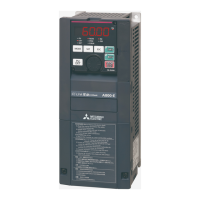
